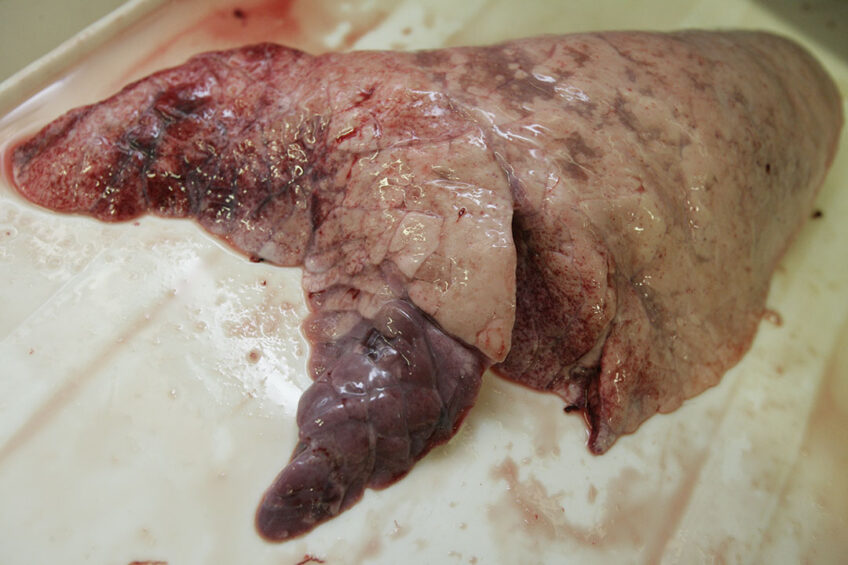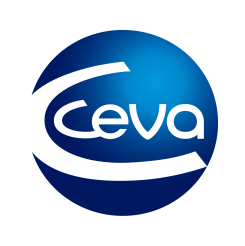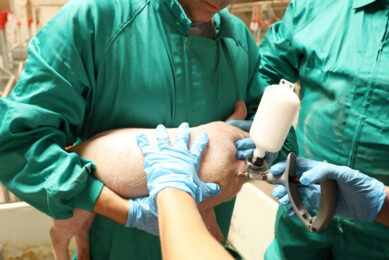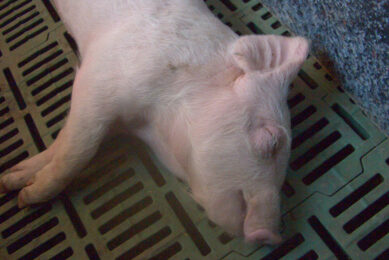Lung lesions are related to lower ADG – but by how much?

Checking pig lungs after slaughter continues to make sense. It has long been known that there is a relationship between lesions related to enzootic pneumonia (EP) and the animals’ growth performance during life. Could that be quantified?
Mycoplasma hyopneumoniae (M. hyo) is the primary pathogen of enzootic pneumonia (EP), a chronic respiratory disease in pigs and one of the primary agents involved in the porcine respiratory disease complex (PRDC). EP is characterised by a chronic, non-productive cough and decreased growth rate and feed conversion ratio, typically with no or low mortality. PRDC develops as a consequence of coinfections of both bacterial and viral pathogens, especially Porcine Reproductive and Respiratory Syndrome virus (PRRSv), swine influenza virus (SIv) and porcine circovirus, type 2 (PCV2). Infection with M. hyo often appears to have a subclinical course, where only the growth performance is reduced.
M. hyo-like gross lung lesions consist of purple to grey areas of pulmonary consolidation, mainly located bilaterally in the apical, cardiac, accessory and cranial parts of the diaphragmatic lobes.
Normally, in slaughterhouses, evaluation of lung lesions is used to estimate the prevalence and severity of lung diseases and their impact on carcass market price, risk factor assessment and vaccine efficacy. Even fast scoring on the slaughter line provides relevant information about the presence and extension of those lesions.
Making a meta-analysis
Could the lesions say something about how much average daily gain (ADG) was missed? To answer that question, researchers from the Czech Republic conducted a meta-analysis of EP and ADG, evaluating a range of studies that were previously published. Those data quantified the linear relationship between lung score results and growth performance.
If confirmed, the relationship between quantified lung lesions and weight gain would have to demonstrate whether lung inspection of slaughter pigs can indicate to pig producers the potential losses in weight gain of commercial pigs. That might be important information for justifying the efforts of scoring lung lesions, not only for their diagnostic value but also as an indication of the economic impact of EP in swine herds.
Materials and methods
The team analysed data describing the impact of vaccines against M. hyo on respiratory health, especially the presence of EP-like lesions in slaughter pigs. For the sake of comparability, the team only considered scientific articles using the Ceva Lung Program (CLP) scoring methodology. CLP consists of the modified Madec method for scoring EP-like lesions. Cranioventral consolidation of lungs is scored from 1 to 4 for each pulmonary lobe with a maximum possible score of 28 per lung. The EP index is calculated as the sum of all scores per batch of pigs examined divided by the number of lungs scored.
The team selected published results of comparative trials in which groups of pigs were treated differently and both lung scoring data and growth performance were known, allowing a comparison of the differences in achieved ADG in the grow-finishing period, corresponding to the differences in their respiratory health.
8 publications met these criteria, varying in the sample size and degree of data aggregation. The dataset of each study consisted of two subsets of individuals, namely group 1 (treatment groups vaccinated with Hyogen, Ceva) and group 2 (treatment groups vaccinated with different M. hyo vaccines in different studies or unvaccinated groups).
Strong negative correlation
Not surprisingly, the 2022 meta-analysis confirmed that scoring of lungs in slaughter pigs for typical EP-like lesions provides quantitative informational value. This indicates not only the presence and intensity of EP in the swine herd, but also the losses in weight gain of the pig populations investigated. Following the evolution of the EP index, it is clear that it can serve as a monitoring tool, predicting the improvements or degradation of growth performance.
It is already known that vaccination of pigs against M. hyo is efficient in reducing lung lesions observed in the abattoir. Similarly, the economic benefit of vaccination against M. hyo due to higher growth rate is also proven.
In the 8 published field trials using the same scoring methodology and measuring weight gain, Hyogen vaccination resulted in a reduction of the EP index by 0.365 units and an increase in ADG by 39.0g. The present results thus demonstrated that the change of each EP-index point corresponds to 106.8g of ADG.
References available upon request.
* This article is a shortened and approved version of an article that was published in
the International Animal Health Journal, volume 9 (2022), issue 2.






